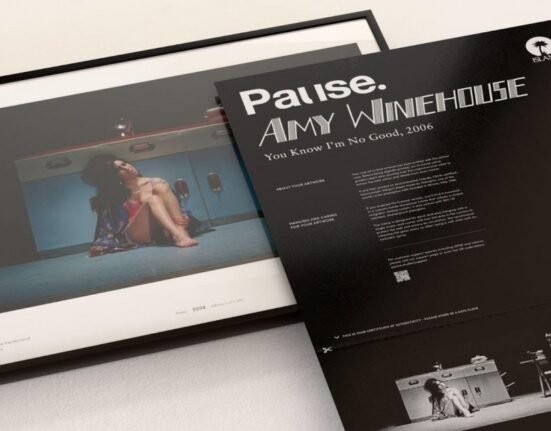Why should only deep-pocketed millionaires enjoy the sorts of profits that can come from investing in high-end art?
That simple, rather noble-sounding premise has propelled the rapid expansion of Masterworks, a company that solicits investments in works of art.
Masterworks democratizes the art market by offering average investors an opportunity to buy $20 shares in individual paintings by Warhol, Picasso and others that the company has agreed to purchase.
In just eight years, it has become one of the art market’s biggest buyers. Its collection of 500 artworks is now valued at more than $1 billion and its platform has drawn 70,000 investors.
“No art investing experience? No problem,” the company’s website has advertised.
“Our question is: How do we expose more people to art and how do we make it more investable by everyone than what has historically been available?” Scott Lynn, the company’s founder, said in an interview.
Some art market experts, though, suggest that the company can be too optimistic in its marketing of artworks, a practice that understates the potential to lose money, especially for art market rookies.
While Masterworks provides caveats and warnings about the risks, its website is awash with splashy graphics that promote the potential upside of the market. Paintings are presented as similar to others by an artist that have historically appreciated at rates as high as, say, 31 percent a year — far outpacing the stock market.
“If you present the art market through the metric of a very financially oriented model, do people really understand the risks or how value is created?” asked Anders Petterson, the chief executive and founder of ArtTactic, which analyzes the market.
One of the company’s ads on social media featured images of the artist Jean-Michel Basquiat and the entertainer Jay-Z. “Most investors wish they could invest alongside Jay-Z,” the ad said. “Now you can too.”
But Jay-Z is not a Masterworks investor. A company spokesman said the ad only meant to suggest “what celebrities and museums invest in artist markets to help contextualize the importance of these artist markets for people who are otherwise unfamiliar.”
Until recently, the company’s website had claimed that nearly a million investors “were building a better portfolio with us.” Actually, the number reflected not investors, but people who had registered on the Masterworks website and were perhaps thinking of investing. When asked about it, the company replaced the term investors with “users,” one of several instances when the company adjusted language after a New York Times inquiry. The website continues to say the users are “building a better portfolio with us.”
Masterworks says it has not misled investors and that its expansive research staff and choosy selection of works has minimized the risk. To be sure, some investors have done quite well. The company has sold 24 paintings with annualized returns of 4 to 789 percent. Masterworks says it has returned a bounty of more than $65 million to investors who participated in those sales.
But the sales represent only a fraction of the art the company has bought. The company has only sold one work in more than a year, and though the market has been in a slump and the company warns that art can take time to appreciate, some investors have become upset to see the value of their portfolios drop.
One plank of the company’s pitch to investors has been the assertion, online and in interviews, that the postwar and contemporary art market (after World War II to today) has largely outperformed the S&P 500 for decades.
Masterworks is hardly alone in making this argument. The ArtPrice 100 is among those who have asserted that blue chip art outperforms the S&P 500, citing its analysis of the repeat sale data for the 100 top selling artists in the world.
But Clare McAndrew, one of six art market economists who reviewed the Masterworks platform at the request of The New York Times, said such comparisons “can be simplistic.” In gauging the market’s performance, she said, such art indexes only measure works that were successfully sold, not the many others that failed to find a buyer.
“All things that didn’t sell by artists are completely outside the index,” she said.
McAndrew said such metrics also fail to measure artworks sold privately, which account for nearly half of all sales in the market.
A Masterworks spokesman said it conducts several types of research analysis that support its view on art market performance. It believes its research understates the potential upside of investing because the company relies on data from auctions, which it suggests are the market of “last resort” for artworks that had failed to sell privately and are then offered at lower prices.
“There were a lot of unknowns around whether it would even be possible to make this asset class investable,” Lynn, the company’s founder, said. “And today we have obviously proven that it’s true. There has never been anything like it in the art market.”
Seeing an Opportunity
Lynn was a pioneer of online advertising who made millions as a young man by publishing banner ads on websites. He was the person behind some of the sweepstakes games from the late 1990s and early 2000s. One invited visitors to punch a virtual monkey. Another provided an opportunity to search for prizes on a “money tree.” Participants were shown ads targeted to their interests while they played. Lynn later expanded to e-commerce and began collecting art by the likes of Willem de Kooning and Helen Frankenthaler.
“Over time, watching the value of my collection grow and getting to know the art market better, it seemed like there was an opportunity to make the market more accessible,” he said in an interview.
Lynn founded Masterworks in 2017 and now oversees more than 230 employees, including some with experience on Wall Street and in the auction world. It is one of several companies that provide investors the opportunity to buy shares in art and is by far the largest.
Many financial experts agree that art can serve as a hedge against downturns in the stock market. One sign of confidence in the Masterworks business plan was the fact that Tru Arrow Partners, an investment firm co-founded by Glenn Fuhrman, a trustee at the Museum of Modern Art, was part of an initial fund-raising round for the company that totaled $110 million.
But William N. Goetzmann, an economist at Yale University, said the risk in the art market was much higher than in the stock market, more like investing in venture capital.
“The art world is peculiarly a superstar world where only a tiny fraction of artists have huge sales,” he said.
Lynn said Masterworks’s research team uses data-driven analytics to select paintings, typically from the postwar and contemporary art market, with the best likelihood of increasing in value. “We typically buy 1 to 5 percent of everything we are offered,” he explained. Some experts noted, though, that Masterworks has purchased some items that failed to draw much interest at auction. The company said it does so when its internal valuations suggest they are bargains.
Once Masterworks agrees to buy a painting, it sells $20 shares in the artwork through a limited liability company registered with the Securities and Exchange Commission. For each work, the total value of the shares sold equals 110 percent of the purchase price. Masterworks uses that extra 10 percent to fund its operations.
When the work is later sold, the company takes 20 percent of any profit. Investors are warned it may be three to 10 years, or longer, before their painting’s increased value leads it to be sold. During the holding period, the company takes a 1.5 percent yearly maintenance fee.
For investors who seek to exit a position, there is a trading platform on which to sell shares, but buyers there are often looking for bargains.
The company’s subscription agreement notes that there is no guarantee of profit, saying “investors must rely on their own examination of the company and the terms of this offering, including the merits and the risks involved.”
The marketing materials are significantly more upbeat and the company relies on them to fully sell out all the shares for a work. Sales employees use cold calls and emails with rocket emojis and alarm clocks to alert prospective investors to enticing opportunities and then connect them with an accredited financial adviser who helps them build a portfolio.
At times the company has sent out promotional emails under the name of an important art dealer of the early 20th century who died in 1970. “Exciting news: we’re launching a new Banksy next week,” said an email in March from “Edith Halpert.”
Lynn said he saw nothing odd about the fact that Halpert is long dead.
“We use personas in marketing communications because we have teams of people that respond to investors,” he explained. “I don’t think we have to reach out to get permission.”
Promoting Art as an Investment
Masterworks promotes its ability to sift through the many paintings it could buy to single out those with significant potential for price appreciation.
In marketing charts, it presents the work it is offering to investors alongside a measure of the historical price appreciation of other works by the artist that it deems comparable. Often these criteria are similarities in size or years of creation, or other factors. Typically, the charts display an ascending line that depicts the climbing purchase prices of the similar works, but they also carefully note that past performance “is not necessarily indicative of future performance.”
George Aliferis, a former banker who creates online content about investment management, said he came close to buying shares in a Masterworks offering but decided against it. He said he thought the price trajectories displayed in their graphics understated the risk.
“When you look at the front page,” he said, “and see the charts that go up and don’t mean anything: What is that? It is a line that goes up.”
Natasha Degen, the chairwoman of art market studies at the Fashion Institute of Technology, said she also was concerned that some of the infographics can be misleading.
“I have been surprised with the rosy picture of the art market that these ads claim,” Degen said. “You get a sense from these ads that the market is predictable and that prices are inevitably going to go up.”
The marketing charts are created by an in-house research team at Masterworks using data compiled from public auctions.
Those who invest are then kept abreast of how their portfolios are doing in reports based on appraisals conducted in-house that are checked by a third-party appraiser.
The company said its appraisers abide by stringent industry standards and that the third-party appraiser, who is paid but is not an employee, independently assesses the value of its holdings. In addition, the company said, the accuracy of its assessments is underscored by how closely they have tracked with the sale prices for the works the company has sold.
Jay Grimm, the independent appraiser, said he does not review the marketing materials used to solicit investors. But he said he has final review over quarterly appraisals that the company uses to update investors on the value of their Masterworks shares.
“I have an extremely high opinion of Masterworks’ in-house appraisal staff and the work they do,” he said in a statement.
In August 2023, though, the Securities and Exchange Commission took issue with the company’s use of the term “potential conflict” of interest in describing the use of in-house appraisals. It said it viewed the conflict as “actual,” not potential. Masterworks amended some of its S.E.C. filings but continued to refer to in-house appraisals as a “potential” conflict on others.
In April, after an inquiry from The New York Times, Masterworks made the filings consistent by dropping the term “potential” and classifying the conflict as “inherent.”
Some investors said in interviews that they have had a positive experience with the company. Lance Neuhauser, who invested a small portion of his savings about five years ago, said his portfolio is doing well and that he made a 77 percent profit on shares in a Cecily Brown painting he held for less than a year. “I have been thrilled to get notifications to invest in artists or pieces that I have admired,” he said.
Other investors said that, even though the company warns of the need to be patient, the marketing that showed such attractive historical price appreciation for similar works led them to imagine their investments would grow quickly in value.
In 2022, for example, when Masterworks offered a painting by Banksy, “Exit Through the Gift Shop,” the marketing chart reported that similar works had appreciated historically at an annual rate of 19.9 percent. In June, the company reported an investor’s $20 share in the Banksy was now valued at $14.84, after deducting any management fees.
“Those charts were not a transparent way to look at these investments,” said Herb Gilliland, who invested $9,000 in several works over the last five years and said his portfolio has lost about 15 percent of its value. “Now I feel like my money is in prison and I can’t get it out until somebody sells the artworks.”
Steve Danyluk, an airline pilot and retired Marine, was an art market novice when he invested nearly $25,000 in canvases by Mark Rothko, Ed Ruscha and Pablo Picasso. A year later, when the estimated value of his investments had dropped by $700, he decided to cash out his portfolio on the Masterworks trading platform and ended up losing $8,600 in the sales.
“Masterworks took advantage of people,” Danyluk said in an interview. “I was stupid enough to be one of them — and I don’t think I’m necessarily a stupid person.”
But Masterworks said Danyluk’s decision to sell at a loss rather than wait for his portfolio to appreciate was completely his own. “Danyluk was told (like all our investors) that the investment is illiquid and needs to be held for 10 years,” the company said.
Danyluk sued last year but the case was dismissed by a judge who ruled he had not provided evidence that Masterworks had misrepresented the value of the works he bought.
Masterworks said Danyluk’s suit is the only legal claim that has been filed by an investor. The company has not been accused of any wrongdoing.
Overall, according to the company’s most recent S.E.C. filings, after deducting its fees, just a quarter of the 372 works appraised at the end of June were showing a profit for investors.
Masterworks officials said they view this as an unfair analysis because so many of those works were acquired only a short time ago and have not had time to appreciate in value.
A fairer measure, the company said, would be to review the performance of works that have been in the portfolio for several years. By that standard, it said, even in a slumping art market, some 70 percent of the 41 works it offered more than four years ago had either been lucratively sold or been appraised at higher values that indicate, if sold today, they would result in profit to investors.
In addition, the company said that its own research indicates that, since the end of 2021, the Masterworks portfolio has outperformed the broader postwar and contemporary art market by roughly 24 percent.
“While our management fee covers operating costs for our 230+ person team,” Lynn said in an email, “our profit will ultimately come from the 20 percent performance fee. So when it comes to marketing practices, we have no incentive to overstate the merits of a painting.”
Robert Gebeloff contributed reporting and data analysis. Susan Beachy contributed research.







